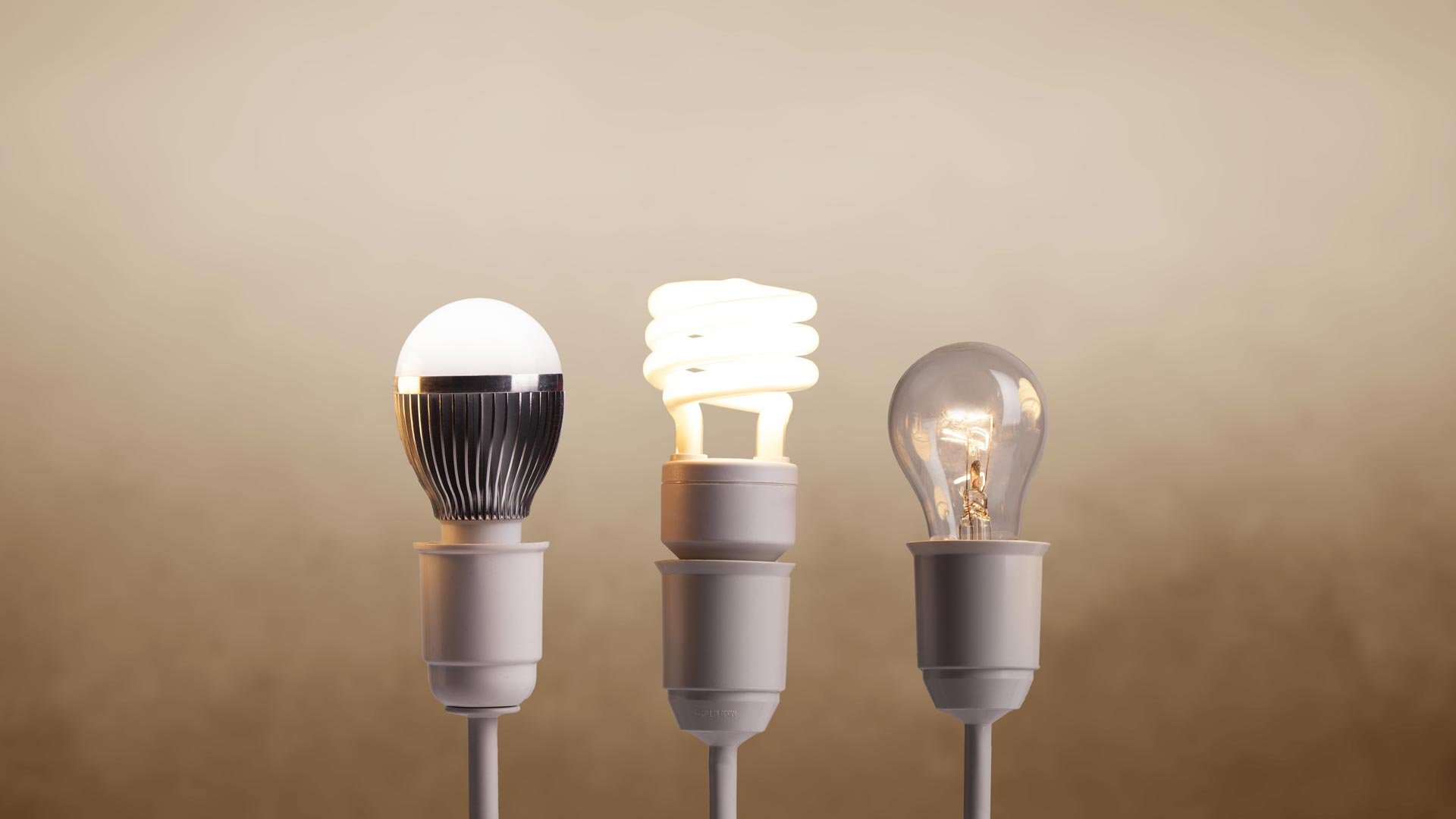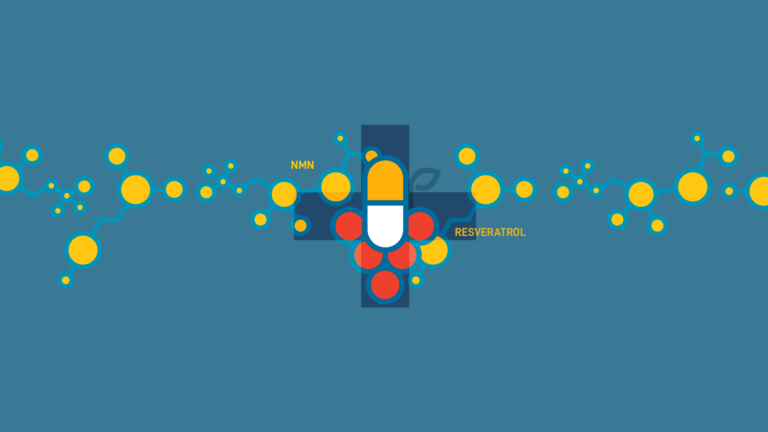Key Takeaways
- NAD is an essential molecule in the human body, but production declines the older we get, and supplementing with NAD directly doesn’t work very well (even through IV treatments).
- NMN and NR are NAD precursors that can help restore NAD to more youthful levels—both are converted to NAD in the cell.
- The biggest difference between NMN and NR is an extra phosphate group that makes NMN the more direct of the two. NMN also has its own transporter that ushers it directly in the cell (See? Efficient!).
Nicotinamide mononucleotide (or NMN for short, because let’s be honest—it’s a mouthful!) and nicotinamide riboside (also lengthy and handily shortened to NR) fascinating compounds that serve as building blocks for nicotinamide adenine dinucleotide (another mouthful, so it goes by NAD or NAD+). And even if you don’t know it, NAD is a vital molecule in your body that fuels all kinds of cellular functions, from energy production to DNA repair to cellular signaling. In short, this is the molecule that keeps us young.
But as we age, our NAD levels naturally decline, triggering the aging process with which we’re all too familiar—cognitive fuzziness, a lack of energy, slow recovery, even wrinkles and graying hair. The link between declining NAD levels and aging has rightfully inspired a search for effective methods to elevate these levels and support healthy aging and longevity. But here’s the twist: We can’t just pop NAD supplements because NAD itself can’t get directly into our cells. NMN and NR, however, have zero issue getting into the cells—and that’s when the magic happens. The clue is in the name—these NAD precursors are like VIP passes that converted into NAD once they’re inside our cells, giving our body the boost it needs from the inside out. It begs the question: What’s the difference between NMN and NR?
Think of NMN as the wilier of the two, intent on the shortcut. Because NMN has an extra piece (a phosphate group, to be very precise), its journey to becoming NAD is a little more direct. NR on the other hand, needs an extra step to get there. Both NMN and NR are great options, but if you’re looking for the most straightforward and efficient path to boosting your NAD levels, NMN just has the edge.
What are NAD and NAD+?
NAD+ (again, nicotinamide adenine dinucleotide) is a coenzyme found in every single living cell. But sometimes it’s referred to, colloquially, as just NAD, despite the little plus sign after it. We, at Wonderfeel choose to use the simpler version in our communications; NAD.
NAD plays a vital role in all cellular functions of our body starting with providing energy to the mitochondria, repairing DNA, and organ function. To put it directly: without NAD, we’d be dead in 10 seconds. While our focus today is the difference between NMN and NR so you can choose the most appropriate NAD precursor for your needs, we invite you to learn more about NAD and how it affects our health, please check our article here.
The NAD boost: Why you can’t take NAD directly
Learning more about boosting NAD levels in the body inevitably raises the logical question: Why not just take NAD directly? Why bother with NMN and NR, if the point is to increase NAD itself? We addressed this very briefly above, but let us share a more comprehensive answer from our own Professor Andrew Salzman, Harvard MD, renowned pharmaceutical inventor and Chief Medical Officer at Wonderfeel.
As he describes it, NAD is a cornerstone molecule for crucial cellular functions, like fueling mitochondria (the battery of the cell, as you might recall from Biology 101) and aiding in DNA repair. In fact, cells value NAD so highly that they protect it quite ferociously, with reinforced outer layers that act as strong barriers to keep it safely contained. NAD is actually quite a large molecule that doesn’t readily cross the cellular membrane—assuming it can even get there in the first place. When NAD is taken orally, it’s not readily absorbed. (And if you’re wondering about IV therapy for NAD, here’s what researchers from a 2020 review have to say: “The metabolism of intravenously infused NAD/NADH is currently unclear.”). As an oral supplement, NAD is broken down in the digestive tract so that by the time it moves through the bloodstream, there’s very little left to enter the cells. That’s why we use NMN and NR. These smaller molecules are not only impressively resilient in the digestive tract, they’re like special keys that unlock the steel doors to our cells, and that access is what allows for NAD conversion once NMN and NR are safely inside—right where they can be the most useful.
Based on a 2020 study, both NMN and NR are proven to bump up those NAD levels, which is great news for keeping our cells youthful and vigorous. But even though they’re on the same team, they play the game a bit differently. So, what sets NMN and NR apart, and is one a better pick than the other? Here’s what makes both of these NAD precursors unique.
The difference between NMN and NR
From a molecular standpoint, both NAD precursors are largely the same. NMN, as we’ve covered, has an additional phosphate group, which makes it physically bigger—but not by much, and not nearly as big as NAD. Both NMN and NR are considered safe for human consumption, and both use the same pathway to boost NAD. The big difference between NMN and NR is what happens inside the cells in the conversion to NAD, which is, after all, the goal.
NMN is the immediate precursor to NAD, and it actually behaves as a sort of go-between for NR and NAD. In order for NR to convert to NAD in the cells, it must first be converted to NMN. The process itself is fairly elaborate, but in simple terms, taking NMN directly eliminates the conversion step inherent to the NR process. Interestingly, this understanding is relatively new. In 2019, a specific transporter, Slc12a8, was identified, which is particular to NMN and serves as a kind of oversized doorway that lets this bigger molecule through. Before this discovery, some scientists thought that due to its size, NMN was too big to cross cellular membranes and needed to convert to NR before it could enter the cell and begin NAD biosynthesis. Now, we know better.
NMN or NR? Additional considerations
If both NMN and NR have their own methods of making it in the cellular doorway to increase NAD, you may rightly be wondering what difference it makes which one you take. You’ll find different opinions on the topic, and here at Wonderfeel, we see the value in both molecules. But the fact remains, if boosting NAD levels is the goal, you can get the job done a little better with NMN vs NR.

We see NMN as the most efficient option, and that’s why you’ll find it in the Wonderfeel Youngr™ formula. Up until recently, NMN was extremely expensive and difficult to produce compared to NR. It’s still the new kid on the block, but the interest is there and the science is advancing at a rapid clip. One of the latest human clinical trials in April 2021 confirmed that NMN effectively raises NAD levels. But our formula enhances the power of NMN even more. We combine it with selectively chosen antioxidants and sirtuin activators that work together to bolster cellular defenses against oxidative stress and inflammation. In short, by including ergothioneine, hydroxytyrosol, resveratrol, and vitamin D3 with our clinically proven dose of NMN, our formula doesn’t just replenish NAD, as so many supplements do. It also regulates an enzymatic process that’s responsible for depleting NAD in the first place. That makes Wonderfeel Youngr™ less of a “fill the tub” approach to supplementation and more of a “plug the leaks” option. It’s an often-overlooked action that makes a tremendous difference in sustained energy metabolism, cellular health, and longevity benefits as a whole—and as it happens, it’s wonderfully efficient, which is kind of our thing.
NMN and NR: The bottom line
Research into NAD precursors, including both NMN and NR, is ongoing — and exciting! Here at Wonderfeel, we look forward to bringing you the latest studies and discoveries in cellular science. In the meantime, treat your cells to a Wonderfeel Youngr™ NMN subscription and enjoy the many benefits that come with efficiently increasing NAD levels.
Frequently Asked Questions
Is it better to take NMN or NAD?
To increase NAD in the body, it’s more effective to take NMN. NAD is a large molecule that doesn’t absorb when it’s taken orally, and no research to date validates the efficacy of IV NAD. NMN, on the other hand, is efficiently absorbed, impressively resilient in the digestive tract, and has its very own transporter directly into the cell. That makes it the clear winner for boosting NAD.
Is NMN more effective than NR?
NMN and NR are both effective NAD precursors, but NMN is the more direct option. It has its own transporter into the cell, where it’s directly converted into NAD. NR actually converts to NMN in the cell before it converts to NAD. Because NMN skips this extra step, it likely raises NAD levels a little faster.
Is it better to take NAD or NADH?
In the cell, NAD is converted into NADH—think of it as the active form of NAD. If the goal is taking a supplement to boost NAD in the body, NAD precursors like NMN and NR are the most efficient, effective option. Unlike NAD, a large molecule that can’t cross the membrane into the cells and struggles to make it there in the first place, NMN and NR are smaller molecules that are more resilient in the digestive tract and readily absorbed for the greatest efficacy.
Is Sinclair taking NMN or NAD?
Dr. David Sinclair, a leader in the longevity space, has stated publicly that he takes NMN, not NAD. Taking NAD directly isn’t an effective way to increase NAD in the body. That’s what NAD precursors like NMN and NR are for.













